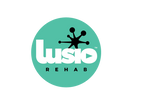Why Is Rehabilitation Useful for Disability?

According to the World Health Organization, there are an estimated 2.4 billion people currently living with a medical condition or disability that benefits from rehabilitation. This group of people benefit from the investment of skill and creation of resources to reverse their disability, and achieve their goals.
It is the responsibility of the universal health system to create rehabilitation opportunities for people with disabilities, and as you read on, you are going to learn more about the importance of disability rehabilitation and how it is useful in helping people with disabilities.
What Are the Types of Disability?
Causes of disability include medical conditions or dysfunctions of one or more body parts that results in it being difficult for an individual to perform one or more activities.
The following is a list of some of the types of disability and a few example conditions of each type:
What Is Rehabilitation?
Rehabilitation is an essential part of improving life for people living with a disability and offers avenues for them to reach their full potential in terms of education, vocation and social environments.
For people with a disability, rehabilitation increases opportunities for education, recreation and meaningful employment, as well as being critical in helping them become as independent as possible in doing their daily activities. Rehab can take many forms which include formal and informal therapy sessions and involve a range of resources.
Contrary to what many believe, rehabilitation is not just for people with long-term physical disabilities, rather it is useful for all manner of medical conditions, impairment or injury.
How Does Rehabilitation Help with Disability?
Rehabilitation can be a time consuming pursuit. The type and amount of resources will depend on the nature and extent of the disability as well as what the individual wants to achieve.
The more rehabilitation undertaken the better the outcomes, and there is no doubt that well targeted rehabilitation helps people with disabilities reach their goals. But again, the nature of the disability will largely determine the outcome. For example, it is perfectly reasonable to expect that someone undergoing a knee reconstruction will make a full recovery, but this sadly cannot be said for someone who suffers an acquired brain injury.
What Are the Benefits of Rehabilitation in Disability?
Rehabilitation is important for disabled people because of its many benefits, including:
- Support groups and connections to other people with similar conditions
- Renewed self-esteem
- Increased functions of affected body parts
- Reduced impacts of medical conditions
- Prevents complications
- Promotes well-being.
What Are the Different Rehabilitation Approaches or Strategies?
There are many different approaches and strategies for disability rehabilitation. One person may undergo a rehabilitation plan differently from another person. The approaches will depend on the type of disability, the affected body part and the age and other conditions of the person.
Repetition is an important part of effective rehabilitation, especially when the individual is learning a new skill. New neural pathways need to be established and then re-enforced through successful repetition and increasing complexity.
Below is the list of common disability approaches and strategies.
Physiotherapy
This includes physical activities, therapy, training and exercises that help improve strength, coordination and mobility of the affected body parts like muscles and limbs.
Some examples of this strategy are:
- Functional task related practice or practice of the activities the person wants to improve
- Mobility training
- Constraint-induced therapy
- Range-of-motion therapy
Technology-Assisted Physical Activities
This strategy is rehabilitation through assistive technology. It is a form of physical activity, therapy and exercise with the help of technology such as electricity, AI, computers and other digital devices and technology. Some of these activities are:
- Functional electrical stimulation
- Robotic technology
- Wireless technology
- Virtual reality
Cognitive and Emotional Activities
In this type of disability rehabilitation, the main focus is the recovery of the brain and emotions. It includes:
- Therapy for cognitive disorders like problem-solving, memory, judgement skills and social skills
- Therapy for communication disorders including speech therapy
- Psychological evaluation and treatment
- Medication
Seasonal Group Classes and Activities
Occasional group sessions will help the people connect, support and socialise with other persons with disabilities. Experiencing rehabilitation as a group will teach them that they are not alone in the journey to recovery and they can encourage one another. Some of the group rehabilitation activities are:
- Yoga
- Meditation
- Crafting
- Group sharing.
How to Get Rehabilitation in Australia?
Most hospitals and healthcare facilities in Australia offer rehabilitation services for their patients. Disability rehabilitation is also available from private rehabilitation centres and providers.
Increasingly, clinicians are recognising the benefits of assistive technology. Augmented feedback promotes engagement, independent practice and the opportunity to achieve high numbers of successful repetitions.
Lusio Rehab is a leading Australian assistive technology manufacturer. We work with physiotherapists, occupational therapists and exercise physiologists in achieving the best outcome to physical therapy, rehabilitation and movement. We aim to provide disabled or injured people with a more convenient, fun and effective option for rehabilitation.
At Lusio Rehab, our flagship product for rehabilitation and physical therapy is LusioMATE.
LusioMATE is known and approved by clinical experts across the globe to help their clients’ perform regular therapy via a suite of games and features that encourage rehabilitation at home.
LusioMATE is a motivating, engaging and fun physical therapy ecosystem app with wearable sensors that connects to any mobile device. All activities and therapies done by the client through LusioMATE can be remotely monitored by a therapist.
If you are a healthcare provider, physiotherapist, occupational therapist, or clinician, contact us now. Let us work together on rehabilitation that can fit in your clients' pockets and they can take home so you can monitor their progress wherever you are.
